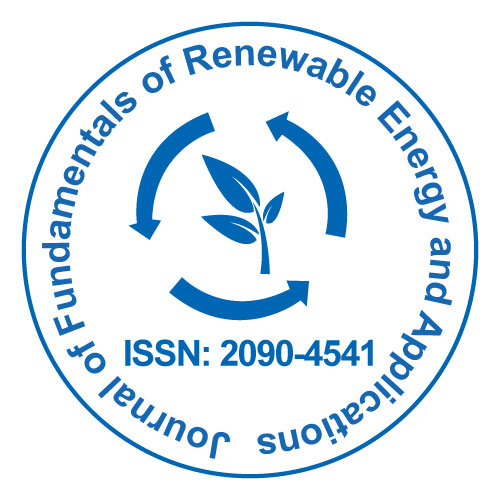
Journal of Fundamentals of Renewable Energy and Applications
Open Access
ISSN: 2090-4541
+44 1300 500008

ISSN: 2090-4541
+44 1300 500008
Axel Schmidt, Thorsten Ruf, Sebastien Lemaigre, Philippe Delfosse and Christoph Emmerling
University of Trier, Germany
Luxembourg Institute of Science and Technology, Luxembourg
Scientific Tracks Abstracts: J Fundam Renewable Energy Appl
Miscanthus giganteus is a perennial low-input energy crop with very high biomass production and positive effects on soil properties and carbon sequestration. It is usually harvested in early spring for thermal combustion when the aboveground part of the plant is dead and dry. This material is less suitable for the production of biogas because it is relatively resistant to microbial decomposition due to its high content of lignified compounds. Therefore, the harvest in autumn is recommended to get better degradable material. One drawback can be that the plant is incapable of transfer nutrients back to the rhizomes where they are stored for the growth in the next year. To quantify the influence of different harvest dates (September, November, April) we analysed two different old Miscanthus giganteus fields (planted 1995 and 2008) over two years. We performed measurements of biomass yields, total and volatile solids and biogas and methane potential. Additionally we analysed the content of the main nutrients (N, P, K, Ca, Mg) in different parts (leafs, stems, rhizomes) of the plants. To estimate the consequences of early harvest on the biomass and specific methane production samples were also taken and analysed from plots where Miscanthus giganteus was harvested in fall in the year before. Based on the results we can conclude that under the right cultivation management Miscanthus giganteus can be an auspicious alternative to other energy crops (e.g. maize) for biogas production according economic and in particular ecologic aspects.
Axel Schmidt has studied Environmental Geoscience and Environmental Assessment and Management in Trier, Germany. Since 2 years, he is a PhD student at the Soil Science Department of the University of Trier, where he is also employed as Scientific Associate. His research activities focus on the cultivation of perennial energy crops and the impact on soil properties and biochemical methane potential (BMP).
Email: schmidtaxel@uni-trier.de